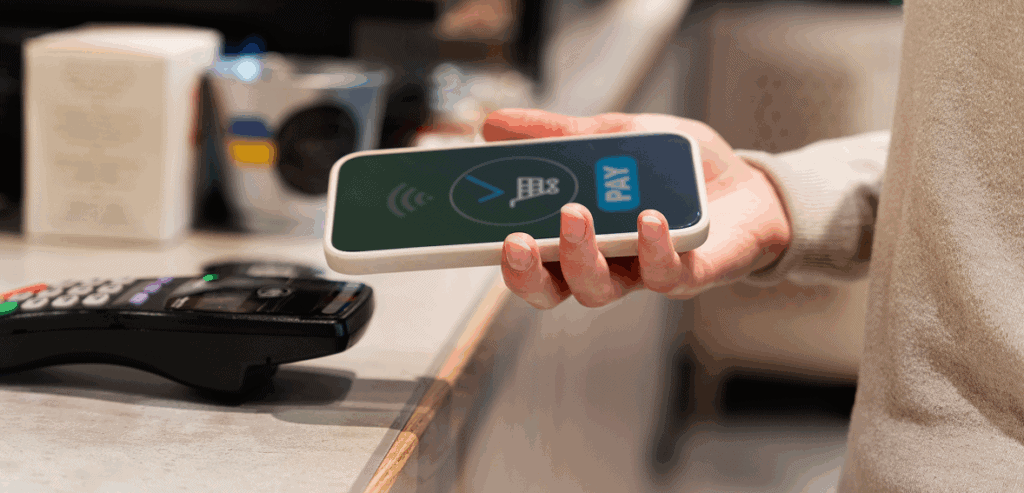
By KarenDUhl April 18, 2025
Checkout is the final—and often most critical—step in a customer’s shopping experience. Whether it happens at a physical register, an online cart, or a mobile POS, a smooth transaction builds trust, loyalty, and repeat business. But a clunky or confusing checkout process? That’s where efficiency breaks down, and revenue slips away.
This is where integrated payment solutions come in. By syncing your POS, inventory, and payment processing systems, these solutions streamline operations, reduce errors, and enhance the customer experience. In this article, we’ll explore how these systems work, why they matter, and how they help businesses of all sizes operate more efficiently.
What Are Integrated Payment Solutions?

At its core, an integrated payment solution combines your payment processor with other business systems—most commonly your POS, accounting software, inventory tracking, and CRM tools.
Instead of treating each transaction as a standalone event, integrated systems connect every piece of the checkout process into one seamless workflow.
From Fragmented to Fluid
In a non-integrated setup, each component functions separately. Sales are entered manually into the POS, receipts are filed, and inventory is updated in a separate spreadsheet or software. This often leads to extra work, human error, and slower customer service.
An integrated payment system, however, handles everything at once. A sale updates your inventory, records the payment, sends a digital receipt, and logs customer data—all in real time. This is the foundation of a more efficient, connected business.
Why Integration Matters
When your tools don’t communicate, it creates blind spots in your business. Sales data may not reflect inventory levels. Customer insights might get lost. Reconciliation at the end of the day becomes a time-consuming task.
Integrated payment solutions eliminate these inefficiencies by creating a unified checkout process—saving time, improving accuracy, and delivering better insights.
How Integration Enhances Checkout Efficiency
Efficiency at checkout isn’t just about speed—it’s about precision, simplicity, and reducing stress for both staff and customers. Integrated systems support each of these goals by reducing manual steps and keeping every element of the transaction in sync.
Let’s explore how this works in more detail.
Faster Transaction Times
When payment processing is embedded into your POS system, there’s no need to switch between screens, swipe cards through external terminals, or key in amounts manually. The system automatically calculates totals, applies taxes, processes discounts, and finalizes the payment—all with fewer clicks.
This leads to faster lines, shorter wait times, and more satisfied customers.
Fewer Errors, Less Rework
Manual entry increases the chance of mistakes—typing the wrong amount, forgetting to apply a discount, or entering the wrong customer information. These errors lead to voided sales, refunds, and lost time.
With an integrated system, prices, taxes, and promotions are automatically applied based on pre-set rules. The checkout process becomes more accurate, and staff can focus on customer service instead of double-checking data.
Automatic Inventory Updates
One of the hidden time-wasters in retail is inventory reconciliation. If your POS and inventory tools don’t communicate, stock levels have to be manually adjusted after every sale.
Integrated systems update inventory in real-time as sales happen. This not only saves time but also prevents overselling and stockouts—especially critical for businesses with limited inventory or multiple sales channels.
Customer Benefits of Integrated Checkout Systems
Efficiency at checkout isn’t just beneficial for business owners—customers notice it too. A smooth, fast, and intuitive transaction experience enhances satisfaction and leaves a lasting impression.
Let’s look at the customer-facing benefits that make integration a smart move.
Seamless Payment Experience
Customers don’t want to wait around while staff struggle with a glitchy card reader or manually enter data. Integrated payment systems make the process simple—tap, swipe, or insert, and the system handles the rest.
Whether it’s paying with a card, mobile wallet, or QR code, integrated solutions support a variety of payment methods and ensure the experience is effortless.
Digital Receipts and Order Tracking
Many systems offer digital receipts, which are automatically emailed or texted to customers. This not only saves paper but also builds a stronger post-sale connection and gives customers a record of their purchase.
In service-based businesses or online orders, integration also supports order tracking, appointment reminders, and follow-ups—providing a more complete customer experience.
Loyalty and Personalization
When your payment system connects with your CRM or loyalty platform, customer profiles are automatically updated with each purchase. This allows you to:
- Offer personalized discounts
- Track buying patterns
- Reward frequent shoppers
Integrated checkout becomes the first step in building long-term customer relationships, rather than just a transaction.
Back-End Benefits: What It Means for Your Team
The checkout counter isn’t the only area that benefits from integration. Behind the scenes, integrated payment systems reduce administrative work, improve reporting accuracy, and help your team focus on more important tasks.
Here’s how your operations improve from the inside out.
Simplified Accounting and Reconciliation
End-of-day closing becomes faster and more accurate when your POS, payment processor, and accounting software are connected. Payments are automatically categorized, fees are logged, and totals match across systems.
This not only saves hours of manual entry but also reduces errors that lead to costly discrepancies down the line.
More Accurate Reporting
Integrated systems provide real-time reports on sales, returns, customer activity, and more. Instead of cobbling together data from separate sources, managers can access dashboards that show a complete picture of business performance.
Better data leads to better decisions—whether it’s adjusting staff schedules, shifting inventory, or testing new promotions.
Streamlined Training and Onboarding

Training new employees is simpler when everything runs through a single interface. Staff can learn the POS, payments, and customer functions all at once, instead of juggling multiple systems.
This makes your team more confident, faster at checkout, and more consistent in customer service.
Industries That Benefit Most from Integration
While almost any business can benefit from integrated payment solutions, certain industries see especially strong improvements in checkout efficiency.
Let’s explore a few key examples.
Retail Stores
From clothing boutiques to electronics shops, retail businesses thrive on quick, smooth checkouts. Integration keeps stock levels accurate, applies discounts automatically, and speeds up processing during busy times.
Multi-location retailers also benefit from unified reporting and shared customer data across stores.
Restaurants and Cafés
In food service, speed is everything. An integrated POS and payment system reduces wait times, supports tableside ordering, and simplifies tipping. Kitchen printers and online delivery platforms can also be tied into the system.
For staff, fewer errors mean fewer re-fires—and for guests, a better dining experience.
Salons and Appointment-Based Services
Booking, payments, and customer notes are all streamlined through integration. Customers can book online, pay in person, and receive personalized promotions—all through connected tools.
Staff can see client history, upsell products, and reduce appointment no-shows with automated reminders.
Online and Omnichannel Businesses
Businesses that sell both in-store and online need unified systems to avoid inventory confusion and sales duplication. Integration keeps all platforms in sync and creates a consistent customer journey across channels.
For small eCommerce shops or growing brick-and-mortar brands, this is a vital step toward scalable growth.
Choosing the Right Integrated Payment System
With so many options on the market, it’s important to choose a solution that fits your business size, goals, and budget. Here’s what to consider as you evaluate your options.
Assess Your Existing Tools
Before choosing a new platform, make a list of what tools you already use—your POS, accounting software, inventory systems, and CRM. Look for integrated payment providers that work well with your current stack or offer built-in alternatives.
This helps you avoid rebuilding your entire tech infrastructure just to add payment integration.
Prioritize Ease of Use and Support
A system may have advanced features, but if it’s difficult to use, it can slow your team down. Choose a platform with a user-friendly interface, helpful tutorials, and responsive customer support.
If possible, test a demo or start with a free trial to ensure the system fits your workflow.
Look for Transparent Pricing
Some integrated systems bundle payment processing and software into one monthly fee. Others may charge separately or have additional fees for features like loyalty programs or analytics.
Understand exactly what’s included—and what’s not—before committing. Look for providers with no long-term contracts or early termination fees.
Making Integration Work on a Budget
Integration doesn’t have to be expensive. In fact, many small business tools now come with built-in payment processing or easy third-party integrations.
Here’s how to make integration work, even with a tight budget.
Start with the Essentials
Focus on integrating your POS and payment processing first. Once that’s working smoothly, you can gradually add accounting software, CRM tools, or inventory platforms.
This phased approach keeps costs manageable and ensures each piece works well before adding more.
Use Scalable Platforms
Choose tools that grow with your business. Look for systems with tiered pricing plans that allow you to start small and add features later. Avoid platforms that require expensive hardware or all-in-one packages that include tools you don’t need yet.
Train Your Team Early
A successful rollout depends on your staff. Involve them in the process early, train them on new features, and gather feedback. The smoother the transition, the faster you’ll see results in efficiency and customer experience.
Conclusion
In a world where customers expect fast, smooth service and business owners need better tools to stay competitive, integrated payment solutions offer a win-win. They speed up the checkout process, reduce errors, enhance customer satisfaction, and give you clearer insights into your operations.
Whether you’re a boutique retailer, a bustling café, or a growing service business, integration turns your payment system into a powerful business tool. With the right setup, you won’t just process transactions—you’ll create an efficient, modern checkout experience that supports growth at every level.
The bottom line? Integration isn’t just about technology—it’s about working smarter.